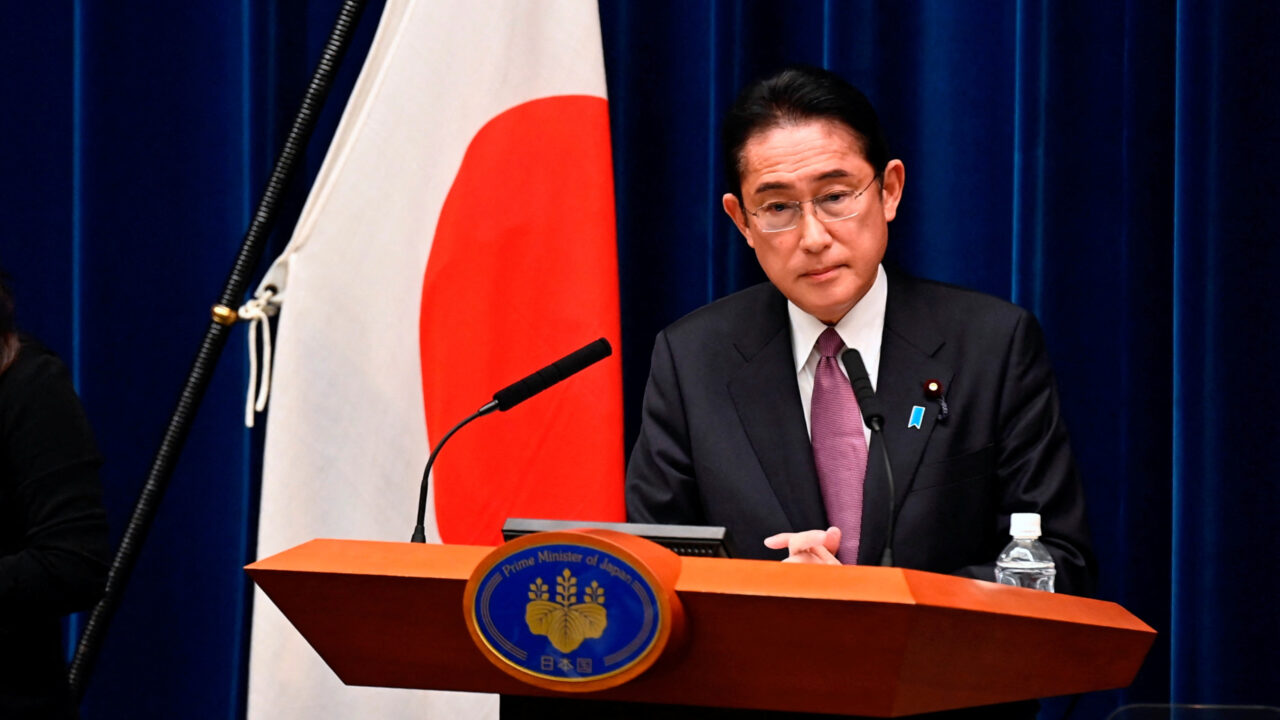Setting the course: Japan’s new security strategy
Japan’s new security strategy sends a powerful signal to current and future allies – and to possible adversaries
The year 2023 is already shaping up to be consequential for Japan’s role in the Indo-Pacific and on the global stage. On 1 January, Japan took over the G7 presidency and joined the United Nations Security Council as a non-permanent member for the next two years. Shortly before, the Japanese government released three strategic documents to address security challenges in the region: the National Security Strategy (NSS), the National Defense Strategy, and the Defense Buildup Program. With them, Prime Minister Fumio Kishida is sending a powerful signal that Japan is an Indo-Pacific security ally that Europe can count on.
This is the first time the NSS has been revised since 2013. The new version has two major goals – to strengthen Japan’s deterrence ability and to ensure the Self Defense Forces (SDF) are ready to fight in the case of a conflict. This strategy, coupled with the strong diplomatic demeanour currently shown by Kishida, represents a remarkable turn. It announces the decision to carry out a multi-layered overhaul encompassing defence, technological, economic, cyber, space, and intelligence capabilities.
The NSS outlines a commitment to acquire “counterstrike capabilities” and increase the defence budget to 2 per cent of GDP over five years – both notable changes from the previous security strategy. Japanese policymakers have debated how best to respond to threats for years. Until now, Japan’s missiles had a limited range of 200km, but it is now planning to introduce Tomahawk cruise missiles, produced by the United States, which have a range of 1,610km. Sceptics of this new direction have raised concerns that this new capability could be unconstitutional, as the missiles could also be used offensively. But the missiles will only be allowed for pre-emptive strikes, maintaining Japan’s exclusively defence-oriented stance. Nonetheless this capability is supposed to send a strong message to possible adversaries that Japan is prepared to defend itself in the event of an attack.
In addition to counterstrike capabilities, the increase in defence spending will allow for investments in cyber warfare, space, and a programme to develop a sixth-generation fighter aircraft with the United Kingdom and Italy, known as “Tempest”. If the increase is fully executed, it would make Japan the third largest defence spender after the US and China. National investment in research and development will have a security related focus and parts of the national innovation budget will also cover technologies that are needed for Japan’s defence for the first time. The NSS also announced plans for a new joint command in the SDF to oversee its three Self-Defense Force units and better coordinate with the US military.
The NSS heralds a new era for Japan’s defence policy, in which Tokyo will expand its commitment and capabilities beyond its preference for economic policy and beef up on diplomacy and defence
The strategy does not aim to revitalise militaristic intentions or shift away from the Japanese constitution. However, it heralds a new era for Japan’s defence policy, in which Tokyo will expand its commitment and capabilities beyond its preference for economic policy and beef up on diplomacy and defence. This is a bold response to the country’s deteriorating security environment and the threats in northeast Asia, particularly from China. North Korea has also grown more threatening, as it has increased the pace of missile testing near Japan and across the Japanese economic exclusive zone and territory. Meanwhile, joint exercises by the Chinese and Russian militaries near Japan have become more frequent. The increasing presence of foreign militaries around Japan, accompanied by the fast development of new military technologies and capabilities, have highlighted Japan’s vulnerabilities and shown the need for modernisation if Japan hopes to be able to defend itself in the event of a conflict and not fall behind other militaries.
The new strategy represents a determined step towards developing a defence-oriented posture in order to actively protect the core principles of a free and open rules-based international order, to fight any unilateral attempts to change the status quo by force, and to concretely implement steps towards more active engagement independently and with allies. Yet the NSS has a daunting long-term agenda that will require stable and strong domestic support and convincing leadership by Kishida, especially regarding financing the defence budget and the implementation process. In order to acquire the planned capabilities, Japan will also need the assistance and guidance of its primary security ally – the US – and other existing allies such as Australia and the UK, as well as new security partners.
The EU and the Indo-Pacific are deeply interconnected through investments and trade. Geopolitical tensions in the region automatically affect trade and supply chains as well as technological, political, and security areas. The EU’s Indo-Pacific strategy, released in 2022, acknowledges this connectivity and recognises that the EU would be directly affected if a conflict erupted in the region. The EU and European states should therefore take Tokyo’s current landmark efforts as an opportunity to intensify and adjust their security relationship with a key ally in the Indo-Pacific. The NSS’s multi-layered capability development provides many options and areas for cooperation with like-minded countries, both through existing formats such as the US-Japan-South Korea or US-Japan-Australia trilateral formations, or through future security partnerships with European countries or the EU, as well as with South Korea, India, ASEAN, and NATO.
Countries which share Japan’s concern about Chinese behaviour in the region, such as the US, Taiwan, Australia, the UK, India, and France, welcomed Japan’s new strategy and expressed hope for deeper engagement in the security field with Tokyo. During Kishida’s tour of the G7 countries in early January, he signed a defence pact with UK Prime Minister Rishi Sunak that allows forces from both countries to be deployed to the other for training and joint exercises. Kishida also had first discussions with his French and Italian counterparts on deeper security cooperation. Moreover, the US and Japan agreed to expand and modernise their alliance and establish a permanent joint headquarters during their bilateral talks earlier this month. However, some ASEAN states and South Korea have voiced scepticism about Tokyo’s supposedly defensive intentions behind expanding its military, concerned that Japan might become too strong militarily, which rekindles memories from the second world war. Kishida will need amenable diplomacy to prove his intentions to critics and could use the opportunities given through the new NSS to widen cooperation with ASEAN countries and South Korea as well, dispelling scepticism.
Tokyo’s revised security strategy shows existing and future security allies that they can have confidence in Japan as an ally and strategic partner in the Indo-Pacific and that a new level of security cooperation is possible. European countries and the EU should take the opportunities for cooperation that the NSS offers to deepen their security relationship with Japan and support the Japanese government in achieving the long-term agenda of the NSS.
The European Council on Foreign Relations does not take collective positions. ECFR publications only represent the views of their individual authors.



